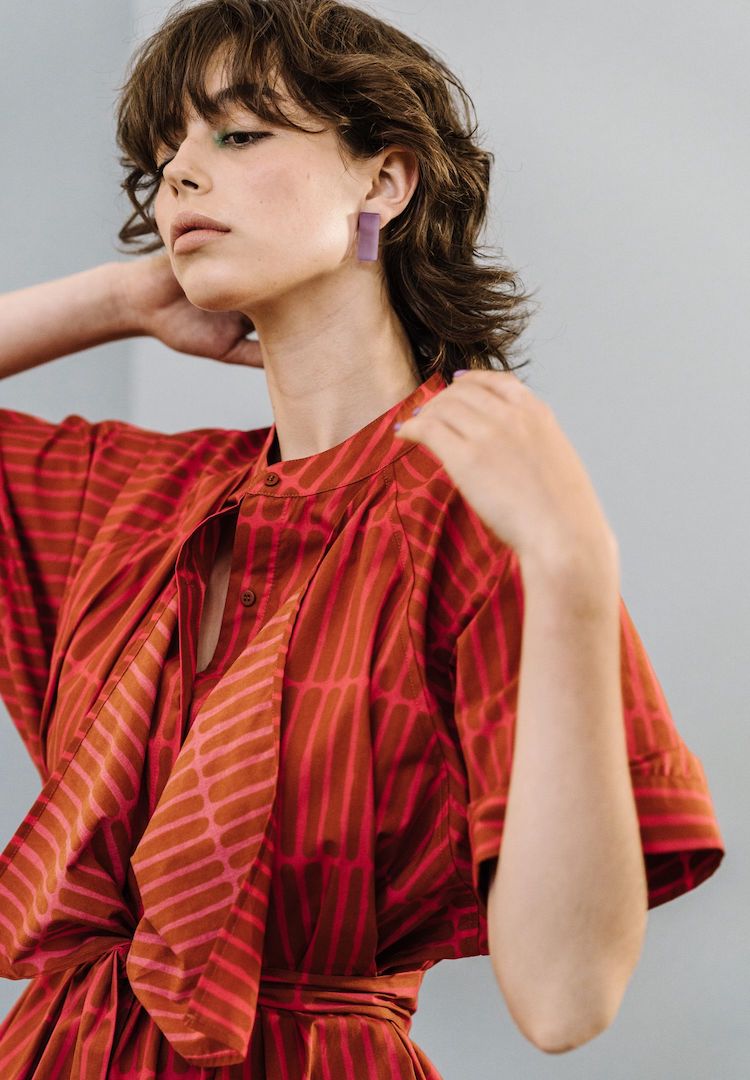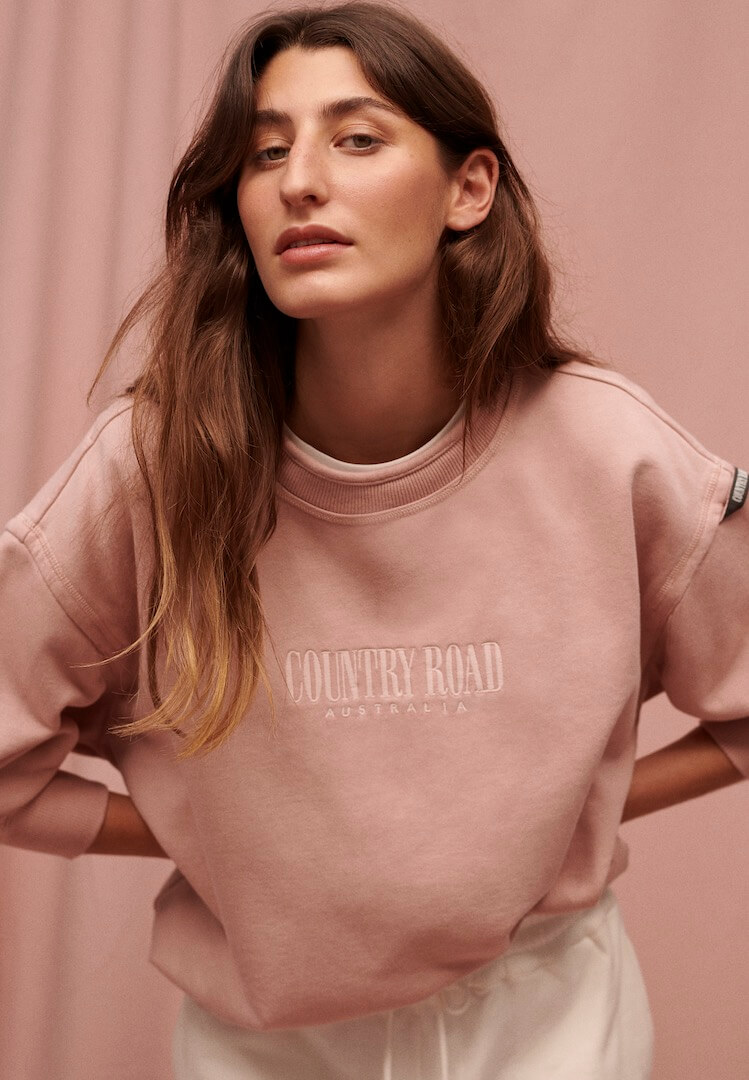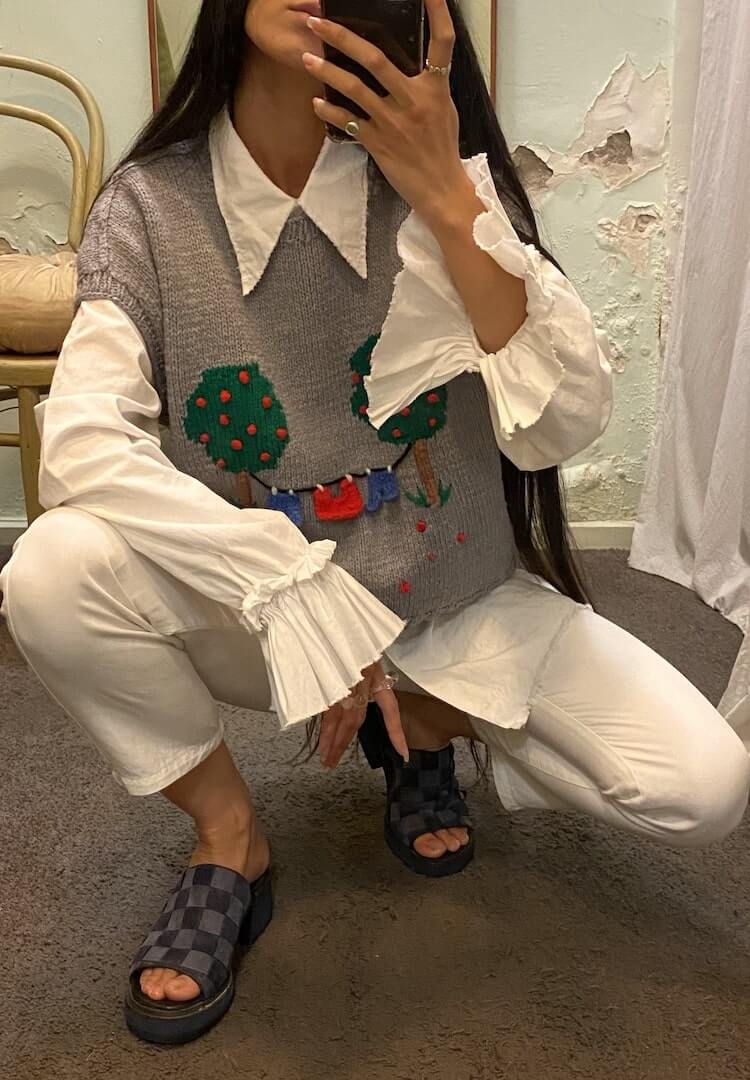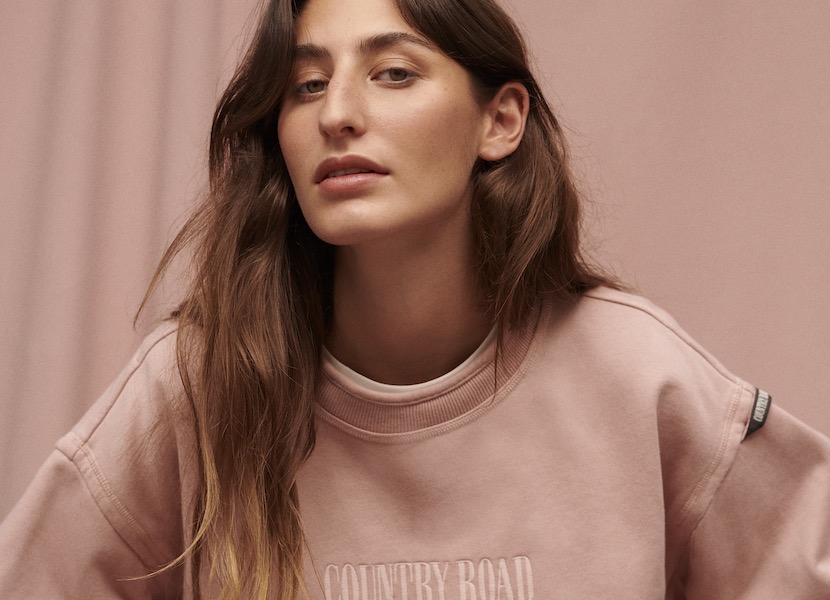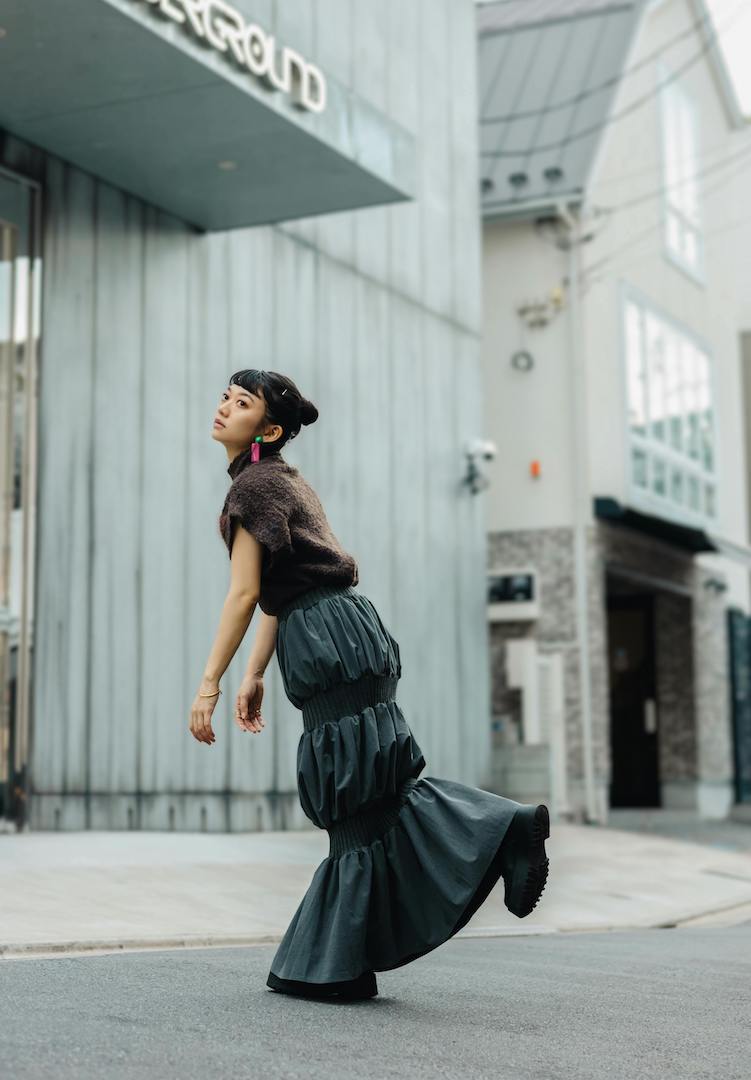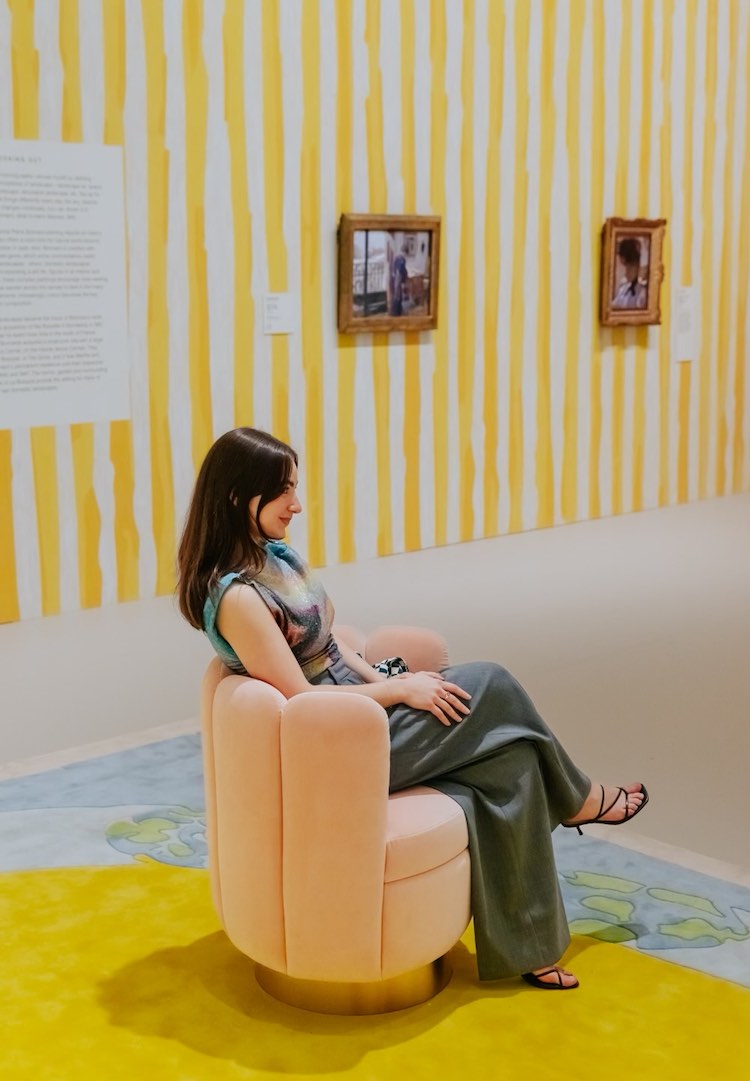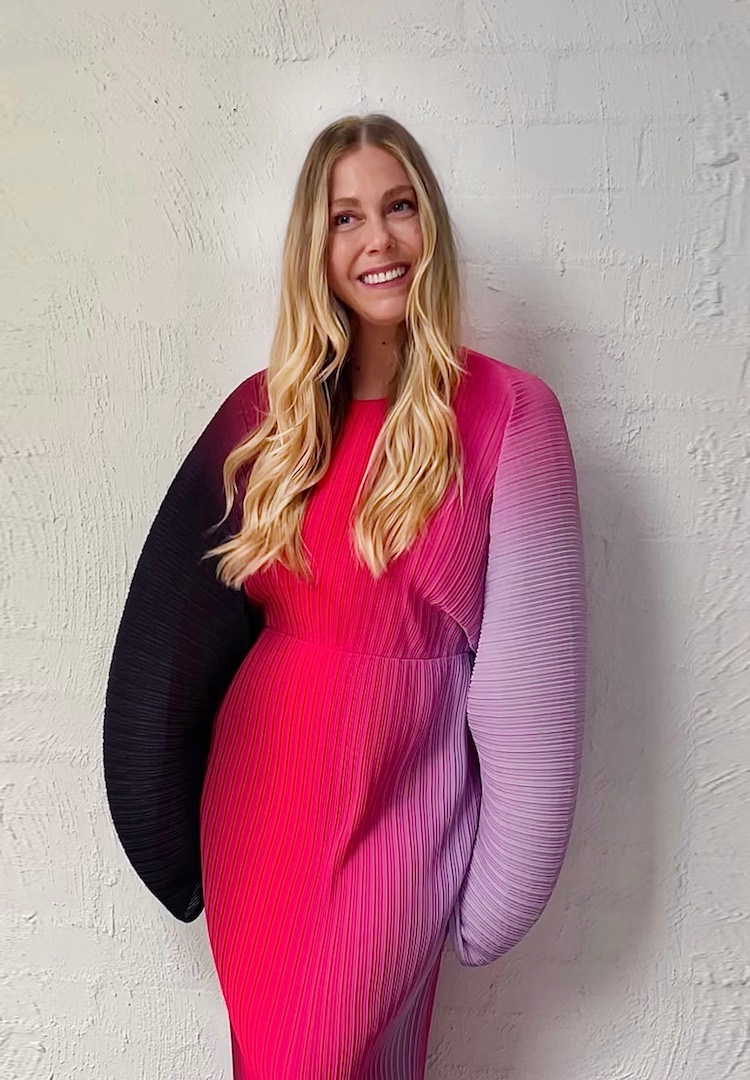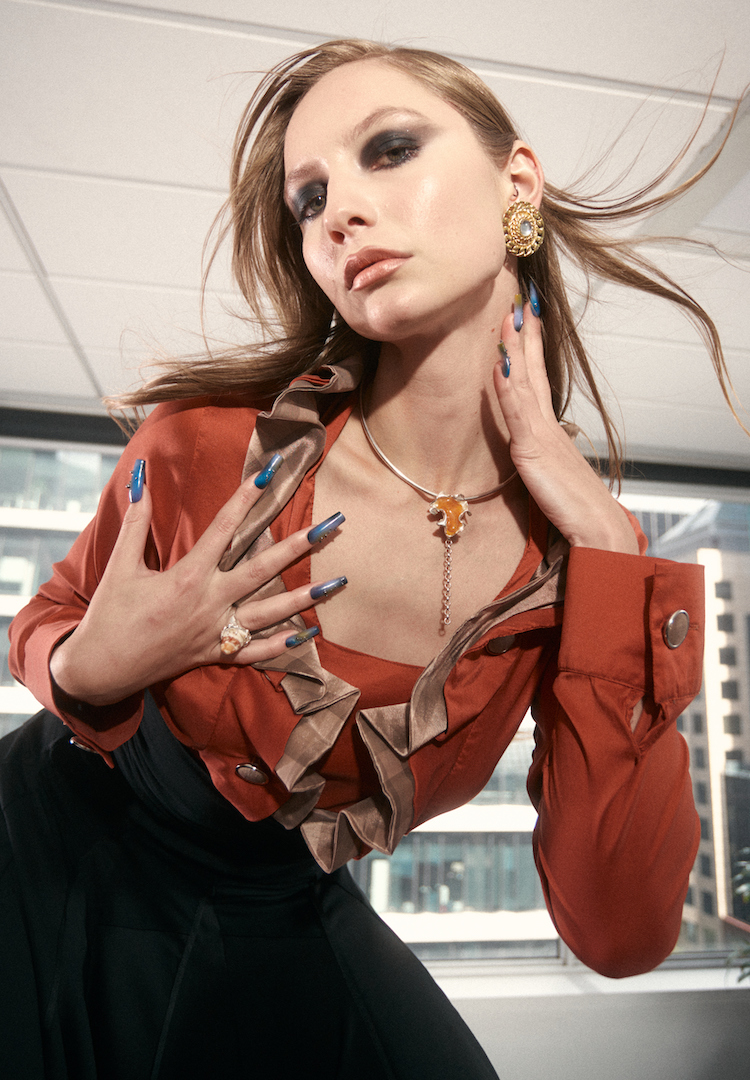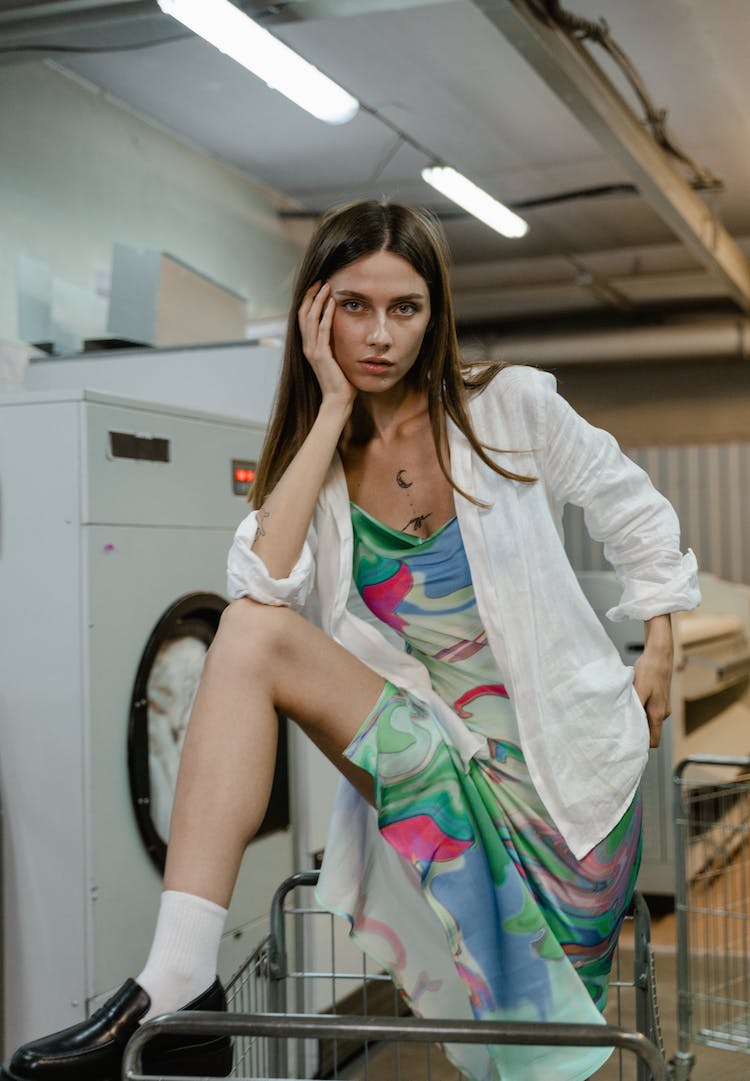If nostalgia sells, how do you drive a fashion brand forward?
IMAGE VIA COUNTRY ROAD
WORDS BY ROSIE WATTS
Who needs a time machine when we’ve got fashion?
If I had to pick a decade to live in based solely on its fashion it’d be the ’80s. Short of a time machine though, I’d 1,000 per cent spend a day on the set of the Netflix show Sex Education instead.
And that’s not just because Emma Mackey is intimidatingly great, but because Sex Education combines the aesthetic of an iconic 1980s John Hughes’ flick with modern comforts. In other words, it’s the embodiment of nostalgic fashion – fashion that brings the past into the future.
Head to our Fashion section for more local designers.
One scan of my university hallways confirms I’m not the only one who enjoys fashion from decades since gone. Mum jeans, roll-necks, flares… if our parents wore it, well, we probably are now. But how, then, do brands keep evolving if nostalgia is what we modern fashionistas crave?
As it turns out, many of our beloved brands are constantly looking for ways to bring the past into the future and help fuel our love for their heritage designs. Think nostalgic re-releases, repair initiatives and limited capsule collections. And trust me when I say it’s all good news if, like me, you also enjoy dressing like the main character in a nostalgia-meets-2021 TV show.
Levi’s: Taking what we know and love, and making it even better
If anyone knows how to harness nostalgia, it’s Levi’s. The brand was founded over a century ago, in 1853, and yet it continues to dominate denim. Levi Strauss & Co’s Chief Marketing Officer Karen Riley-Grant chalks this up to Levi’s commitment to updating its heritage pieces for modern wear and current concerns.
“We are constantly reimagining pieces and fits from our extensive archives to help us inform future collections,” explains Karen. “We also invest in material and technology innovations like [Tencel] and cottonised hemp to improve the quality of our garments and keep the planet in mind.”
But nostalgia for past decades is also to thank for keeping the brand alive. And Levi’s undeniably has its finger on our vintage-loving pulses. Its regular Levi’s Vintage Collections dig into both its own and external archives to serve up slices of fashion (and human) history. The Fall/Winter ’20 collection lets you channel the underground grunge of Louisville, Kentucky in the ’80s. And the Folk City collection will have you looking like you just stepped out the cover of a 1960s Bob Dylan record.
I was 15 when I went searching for my first pair of vintage Levi’s (black 550s, as I recall it). I secured mine online, but browse any op shop and you’ll spot a pair of secondhand Levi’s. And so, aside from reimagining the past in new vintage collections, Levi’s takes ownership of customer re-wear through its Tailor Shop and its Authorised Vintage range.
Both these circular efforts inform Levi’s ‘buy better, wear longer’ message. The brand knows that despite our desire to dress in styles from the past, we still have modern heads on our shoulders – ones that care about climate change and sustainability.
“By inviting our customers to buy secondhand or vintage, we are not only helping keep garments out of landfills,” says Karen. “We’re also inviting our fans to invest in pieces that they will treasure for longer.”
Mimco: A (time) capsule collection of the past, present and future
On the flipside of updating past designs for modern times, is adding heritage elements to new ones. Australian accessories brand Mimco has done just that in its latest limited-run capsule collection, designed to celebrate its 25th birthday.
Mimco’s Head of Design Lisa Tyler tells me the birthday capsule was a chance to reflect on and celebrate the brand’s evolution. “With this campaign, we immersed ourselves in our archives, exploring the evolution of the Mimco women over this quarter-century.”
Each of the capsule’s four collections embodies different parts of Mimco’s history and pay homage to its past designs. But the Est. 96 collection gives me the most nostalgia-tingles with its introduction of limited heritage hardware to new, but ’90s-inspired accessories. I’m talking denim lunchboxes and backpacks complete with limited-edition Mimco rubber badges.
Country Road and Sportsgirl: What goes around well, comes back around well
If there’s one item from my own early collection that I’d love to pay homage to, it’d be my purple-checkered Sportsgirl duffle bag. When we were 12, there was no excursion, school day or sleepover that my best friend and I didn’t bring our Sportsgirl duffles to.
Sportsgirl’s General Manager Leah Summers tells me the warm, fuzzy feeling my duffle bag memories give me is a shared one. “Nostalgia is a recurring theme for Sportsgirl, which stems from our customers’ emotional connection to the brand,” says Leah.
The Rewind Logo Collection, which launched over 10 years ago, pays tribute to Sportsgirl’s heritage and iconic branding. The collection is designed to be as timeless as the logo itself, drawing inspiration from past Sportsgirl pieces and focusing on wardrobe essentials that never date.
Given the state of the world and the logo’s nod to simpler times, it doesn’t surprise me when Leah says interest in logo pieces these past 12 months has increased. And it’s not just us Sportsgirl old-timers who are to thank.
“Whether it’s a nostalgic emotion from their early days or the younger generation liking the pieces’ retro feel, all of our customers seem to have a true connection to the Sportsgirl logo,” explains Leah.
Sportsgirl isn’t the only brand that has worked heritage and nostalgia into its DNA. Country Road’s collections give me, albeit far more neutral, shades of Sportsgirl with its quality basics and prominent logo use.
Country Road’s Head of Womenswear and Kidswear Maria Rinaldi-Cant confirms “nostalgia is something that’s just Country Road. It’s part of the brand.”
With a story that dates back to 1974 and a claim to being one of Australia’s first lifestyle brands, Country Road understands customers’ desires for consistency. “We keep our styling simple and use colour direction to update heritage designs, often choosing colours that resonate with the Australian landscape,” explains Maria.
But it’s not just through its distinct colour palette that Country Road sparks sentimentality. Earlier this year, the brand collaborated with Australian cotton farmers and Victorian manufacturers on a reissue of its iconic ’90s Heritage Sweat. The unisex design replicates every detail of its original counterpart, features oversized bat wings and an embroidered Country Road logo on the front.
For Managing Director Elle Roseby, the limited-edition reissue was about more than delivering a sweet dose of the past in uncertain times. “The last 12 months have been a driver of change,” says Elle. “We’ve made a conscious effort to look to our own backyard and ask how we can further support local.”
Converse: Propelling us into the future, one step at a time
Converse is a brand that’s always had a heel in the past, a foot in the present and a toe in the future. And its recent launch, Create Next, is no exception. The futuristic line of sneakers fuses its innovative CX toolkit technology with familiar converse designs like the canvas high-top.
The CX toolkit is set to transform how Converse shoes are made, with the brand aiming for all its designs to contain the technology by 2022. There’s the foot-adapting stretch canvas, CX foam for boosted impact absorption, and the more durable and flexible rubber outsole.
As a Converse purist at heart, I love the CX Chuck Taylor for staying true to the iconic Chuck form while still introducing the new technology.
But that’s not to say I can’t appreciate the design genius that is the Run Star Motion, Weapon CX and Aeon Active CX. These sci-fi-esque iterations combine elements of heritage Converse designs with innovative silhouettes and clever cushioning. If you’re ever presented with a chance to time travel to the future, these are the shoes you’ll want to be wearing.
For Converse’s VP of Footwear Development and Merchandising Brandis Russel, Create Next is as much about emotion as it is physical innovation. “How we make Converse has delivered on a significant amount of emotional comfort for consumers, meaning connection, nostalgia and memory,” she says.
This meant the design team had to finely balance innovation with loyalty to their heritage styles. Sure enough, the collection uses Converse’s past design language but more figuratively, if you will. “[CX technology] allows us to reference the past, but not always be so literal with that reference,” explains Brandis. “When you go into our archive, you see a lot of line language and gestures that give us leeway and opportunity to bring a ‘future familiar’ vibe to some of our products.”
Given the level of change we’ve faced this past year or so, ‘future familiar’ is a pace of innovation I can get around. But modern life, pandemic or not, moves quickly and technology is always relentlessly advancing. It’s comforting to know then that we can count on fashion to bring us the nostalgia fix we clearly crave.
It’s even more comforting that as the past, present and future meld in designers’ minds across the globe, nostalgic fashion only gets more comfortable, progressive and sustainable. And I for one am here for it: eco-mum jeans, futuristic connies, denim lunchbox and all.
For more on why brands are leaning into heritage designs, try this.

